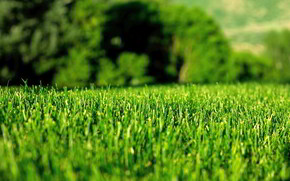
If you want to get your lawn fertilized, choose fall as the season to do so. It is probably the best time of the year to fertilize the green area. You can apply fertilizers during the early part of September, followed by reapplying the same in the later half of October and early November. Although the top of grass tends to grow at a slower pace during the cooler and shorter days of fall, they continue to grow sideways due to the production of tillers. These tillers grow to become new grass plants. Fertilizing the grass and soil during the late fall allows for production of healthy tillers that would create a denser turf by the end of the next year.
The Right Practices Promise Superior Results
How you mow the lawn during the fall is crucial for success. It also helps in protecting the health of the new tillers formed. Mowing must be carried out at a height range of 21/2” to 3” till the top growth slows down. Once the top growth gradually slows down or stops, top lawn care providers recommend lowering the height gradually to 1.5”. Remember, leaving the lawn grass longer and higher could result in fungal infection during the spring and winter season. At the same time, extreme shortening of grass would damage the new tillers and the established base of grass plants. It is necessary to lower the height, but gradually.
What Type Of Fertilizers Do Lawns Require During The Fall?
Speaking about fertilization and kinds of fertilizers required, the winter options may not be the best to think about. The winterizing fertilizers contain a high-level of phosphorus and potassium. There is no proper evidence on whether these fertilizing items would bring in positive results for cool-season grasses or not. Therefore, when you are looking for specialized fall fertilizers, pick the ones that are high in nitrogen content. Remember, these fertilizers help in offering the maximum amount of tolerance against drought and dry conditions in the upcoming summer.
The Growth Of Spurges
Extreme heat and drought conditions can lead to the growth of spurges. However, these spurges usually die of frost. But, during the growing season, it becomes difficult to control the spurges, with the use of herbicides. These spurges have shown enough resistance to herbicides and broadleaf weed killers. Rather, these spurges can be controlled in a more effective way through the use of fertilizers containing triclopyr. Also, if you apply pre-emergent herbicides just before the germination process, the growth of spurges can be controlled.
Applying broadleaf weed herbicide would definitely help in controlling perennial broadleaf weeds in different lawns. However, you need to hold on to your patience-level. The results may not be immediately visible. But, with the advancement of the next spring, you can be rest assured about the disappearance of these weeds. It is always better to provide that extra bit of attention to your lawn during the fall for reaping great benefits, by the time the next spring appears.
Author Bio: Joseph Conrad is a horticulturist, working independently for several top lawn care providers.
